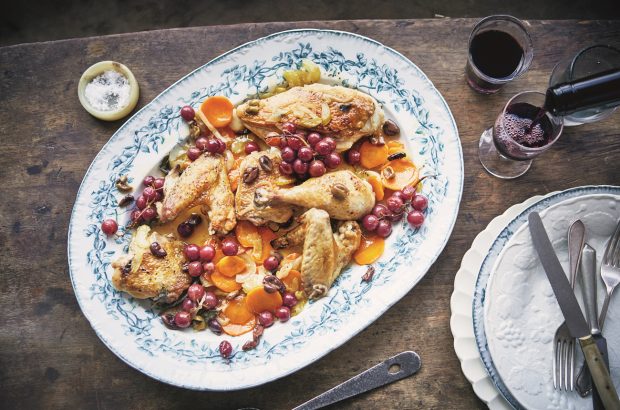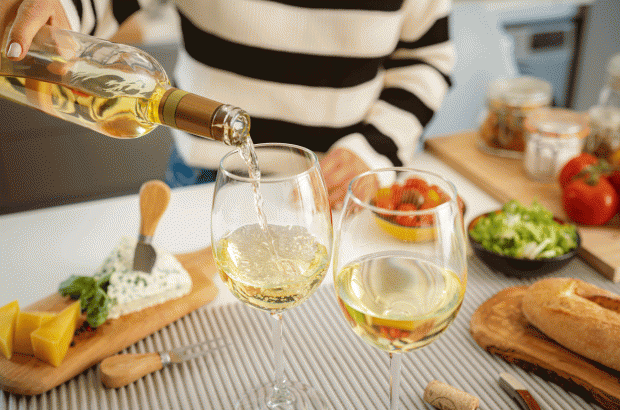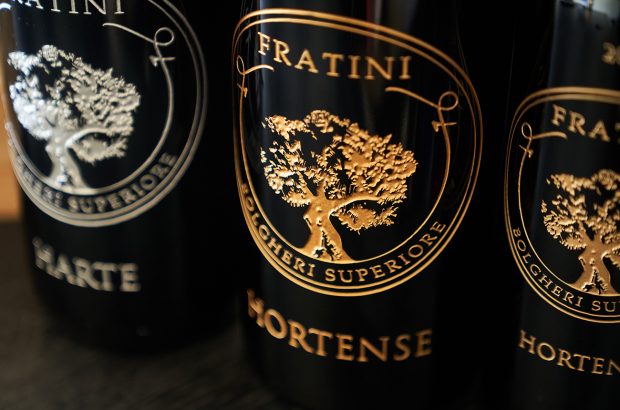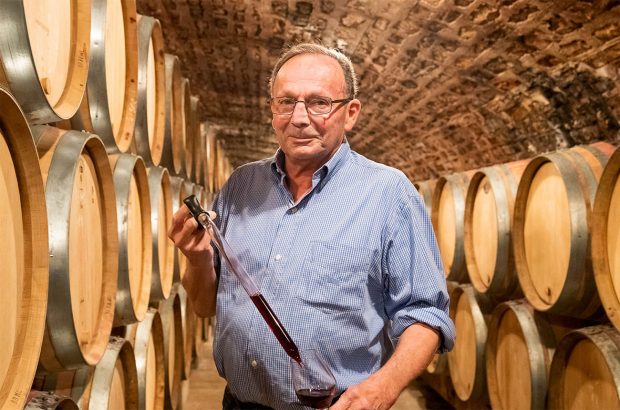- If Chardonnay really was going into retreat, then the Rhône-like climes of the Barossa Valley would be as good a sanctuary as any.
- From the bright horizons of South Australia to Victoria, you enter the Chardonnay doldrums.
- While Australian Chardonnay disappears under its heavy oak coat, it’s Sauvignon that comes out to play.
- Hunter Chardonnay beats the pack for completeness, complexity, ageability and for manageable alcohol.
Ok so we’re officially bored of Australian Chardonnay. It’s packing its bags and setting off on that slippery slope so well polished by Liebfraumilch and Mateus Rosé. Vanishing from the realms of sublime popularity and making its way towards lonely contempt. But ask any Australian grower or winemaker if Chardonnay is really dead and you can guess the response. Not xxxxxx likely!
Styles of Chardonnay
Fact is, it’s time to take a new look… there are a range of styles – regional and otherwise – waiting in the wings to tempt us back. Chardonnay is alive and well in the area around Adelaide, but there’s a threat to its supremacy. Petaluma’s exceptional wine is still king of the Chardonnay/white wine castle, joined by Shaw Smith’s unoaked version, with its restraint and elegance. But, for the others in the Hills, there’s hot competition. The problem is wood. Much Adelaide Hills Chardonnay is loaded down by heavy oaky flavours obliterating any fruit, and there’s another grape hot on its heels in the race for finesse. Shaw Smith, Nepenthe, Hillstowe and Lenswood (with a delicious cinnamon-spicy, rich-fruited, complex seven-year old wine showing a great capacity to age) are estates all doing a good deal to captivate the palate with their Sauvignon Blancs. Chardonnay growers need to watch out.
Clare Valley
The same happens 50 miles or so up the road in another cooler climate region, Clare Valley. This time Riesling not merely throws in a challenge, but takes over. Of the 31 wineries in the region, almost all know they’re on to a good thing with this grape, and Chardonnay doesn’t really get a look in – although the potential is truly excellent. ‘I’m looking for texture, ripeness, length, consistency and ageability,’ says esteemed grower Geoffrey Grosset, and he gets all of this not only in his Polish Hill 1999 Riesling (floral, limey, intense, with fine-tuned acidity and warmth) but happily in his Chardonnay, too, which has gained well-earned praise for ‘well-delineated’ richness and capacity to age.
There are other Clare Chardonnays poking their faces through the Riesling crowd that are worth looking out for. Mount Horrocks’ 1998, especially: it combines toffeeish buttery breadth with a warmth of fruit and fine acidity, showing exactly the way this grape should be in the glass. There are good ones too from Jim Barry and Queltaller.
Will Chardonnay really retreat?
If Chardonnay really was going into retreat, then the Rhône-like climes of the Barossa Valley would be as good a sanctuary as any. In contrast to the dilution, overcropping and insipidness that caused Mateus Rosé and Liebfraumilch to plunge from popular heights, the situation here is quite the reverse. Delicacy and lightness are not on offer, but rich, creamy ebullience is. And that’s ok. Oakiness abounds, but this time the fruit matches it. One sip of Wolf Blass’s 1999 President’s Selection Chardonnay proves prime evidence: this wine undergoes 55% malolactic fermentation, yeast lees contact, and sits in all-new French oak for as much as eight months, yet the effect is of ripe, rich butteriness, balanced by a crisp citric bite (that’s the fruit coming through). Henschke, too (as you’d expect of this top estate), supports the case for Chardonnay, with its 1999 of terrific complexity: cream and apple aromas, oatmeal and primary pine-apple on the palate, neither too bold nor too obvious, proving the Barossa can make this grape great. These provide the role models.
As you cross from the bright horizons of South Australia to Victoria, shame to say it but here you enter the Chardonnay doldrums. The outlook is bleak, and an absence of healthy competition isn’t helping. ‘Really good Chardonnay?’ says Collin Campbell, of Campbells in Rutherglen: ‘You don’t see them that often.’ Too true. Wading through almost tannined oakiness becomes normal, and a sip of good, honest fruit flavours is rare indeed. Head for the hills and the higher elevations, however, and the situation improves.
Campbell showed off his ‘Bobbie Burns’ 1998 Chardonnay at an all-star tasting in Melbourne recently. Full of initial citrus, it developed to ripe apple and raisin on the palate: ‘I’m not a believer in oak; I just use it to give an edge, to round the wine out rather than give flavour,’ he offered, with what seemed like inordinate and unusual sense. So there are winemakers whose oak toleration hasn’t yet reached a ‘three-barrel-per-vine’ vindaloo status… Campbell’s wine has a mere 10% barrel fermentation, and despite the use of sweeter, more ‘obvious’ American oak, the effect is just as he desires.
Granite Hills and Deakin showed well with high-production Chardonnays. The focus had been taken off large proportions of expensive oak, and the fruit left to do its own thing. These estates may not be up there on the Aussie ‘A-list’, but their wines show far more balance than many. Vindalee (Aboriginal for ‘a bare hill’, and nothing to do with over-flavouring) proves the same. A young estate, without the resources to bombard its wines with new oak, instead has Chardonnay with juicy, intense lively fruit.
There’s gold south of Melbourne on the Mornington Peninsula, too, where Stoniers, Willow Creek and Dromana take advantage of cool coastal breezes to create Chardonnays of a supple, mouthfilling delicacy – even to match Clare Valley’s. Gary Crittenden’s Dromana is particularly good, adding weight to the cause of cool-climate Chardonnay. The Yarra Valley, however, is another matter.
‘Red soil Chardonnay has spice, pear and white peach notes that we particularly like,’ says Oakridge’s Michael Zitzlaff of a certain Yarra plot (they’re commendably keen on terroir in the Yarra). ‘We soak oak staves in boiling water to avoid wooded harshness and use low toast,’ adds Paul Lapsley of Coldstream Hills, who’s of a similar mind-set. But it’s confusing. What you still get is lanolin waxiness on the nose; thick textured smokey-bacon on the palate… in other words oak, again. It’s fine to soak those staves first and go for a gentle toasting, but full malolactic, six months’ maturation in barrel, battonage and all the trimmings seem to add up to one thing: a smothering. High alcohols and hot acidity don’t help either. There’s an eye to detail, but, to be honest, in the Yarra Valley Shiraz copes better with the attention.
While Chardonnay disappears under its heavy oak coat (it’s as if winemakers, like cautious mothers, wrap their precious children in so many layers they can barely walk down the street), once again it’s Sauvignon that comes out to play. Both Oakridge’s and Coldstream’s show vivid, ripe grapefruit and melon with fantastic richness, nothing tart or austere. They’re right to say Sauvignon’s future here is going to be amazing. Treated with this restraint, Chardonnay’s could be too.
Head south again and, far from dying, Tasmanian Chardonnay is in its infancy – until it grows up, sparkling wine leads the fray. What you often get now is teeth-jangling, swingeing leanness, with, again, despite the light intensity, that layer of oak. (Why?) At the moment it is the same for Tasmanian Chardonnay, Riesling and Sauvignon alike: yields are too high or vines too young. But it’s not all cloud and gloom. Proof that a bit more vine age will soon make the difference comes with the wines of Dr Andrew Pirie. Pirie’s Piper’s Brook and Ninth Island Chardonnays reap the benefit not only of particularly fine winemaking but of 25-year old vines – single-vineyard ‘Summit’ is from one of the oldest Chardonnay blocks in Australia, planted in 1974, and the wines show that it’s been worth the wait. That bit of maturity and experience sets the stage for Tasmania’s challenge to New Zealand for Chardonnay elegance. But at the moment, on this wind-swept island, Pirie’s on his own.
So if Chardonnay’s not dead in the Barossa, it’s clinging on in Clare and just waking up in Mornington, how about life in the Hunter? Ask any winemaker and the answer’s the same. Chardonnay began life here and it’s not about to give up and die. McWilliams, Tyrrells, Rosemount, Rothbury: the old names still set the standard. Hunter Chardonnay beats the pack for completeness, complexity, ageability and for manageable alcohol – you don’t get that heavy burning palate. And Semillon? Well, its a worthy competitor, but awkward: ‘It’s like bringing up a family: they’re very cute at the beginning, then there’s an adolescence you don’t want to know about, then it gets better,’ said one grower, in a sentiment that more aptly applies to Chardonnay’s whole history.
At 2000, let’s hope we’re seeing the awkward adolescence, with better Chardonnays yet to come. Rosemount’s Mudgee and Orange wines give a sure indication that there are other regions with good things on offer. Western Australia does, too. The enemy is perhaps the anonymous blend, packed with oak to make up for a lack of fruit. Be sure that the fruit’s there and the verdict following Chardonnay’s first ‘Show’ outing in 1971 – ‘either dreadful, or best on show’ – might at last change and err on the flattering side.















